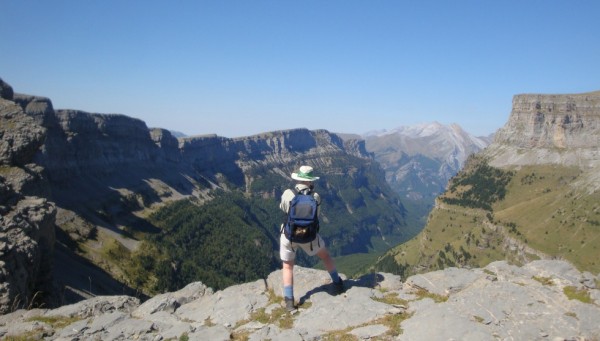The Central Pyrenees is considered to be one of the most stunning parts of the Pyrenees. You’ll find stone villages, flower filled valleys, stunning mountains and many interesting places to discover.
Visit one of the oldest National Parks in Spain
Established in 1918 the Ordesa y Monte Perdido National Park was Spain’s first protected area and an is undisputed highlight of the Pyrenees. Covering an area of 156 square kilometres the park contains the stunning valleys of Ordesa and Añisclo. In 1997 it was made a world heritage site by UNESCO and it is also part of the Ordesa-Viñamala UNESCO Biosphere reserve.
Ordesa National Park highlights are its four deep canyons carved into the limestone. The Ordesa and Pineta valleys are glacial and the Añisclo valley and Garganta de Escuain were formed by rivers.
The Ordesa Valley is the most famous with cliffs rising over eight hundred metres on each side and Monte Perdido is perched majestically at the end of the valleys.
The Añisclo Canyon is over a kilometre deep and the high cliffs combined with the narrow, winding valley makes for spectacular views. The three peaks of Las Treserols – Monte Perdido, Cilindro and Pico Añisclo are the most recognisable in the park and form an impressive skyline for many walks.









